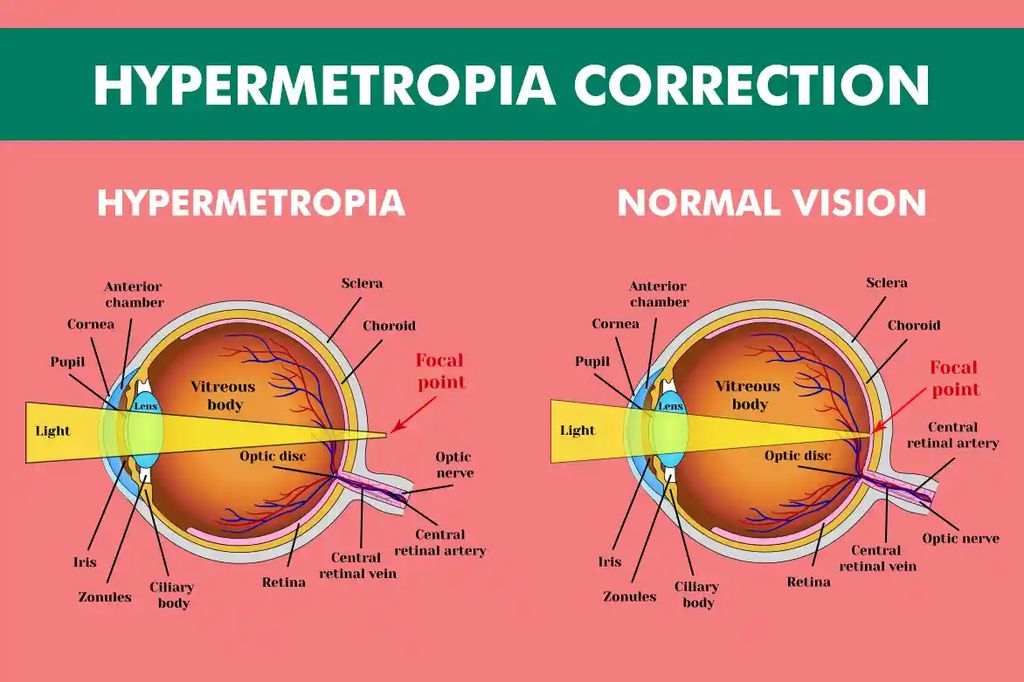
What is remote viewing?
Farsightedness is a visual impairment in which the eye cannot perceive objects near or far clearly. This problem is caused by a malfunction of the refraction system of the eye: incoming light rays are combined behind the retina, not on it. This is typically due to the eyeball being too short or the cornea not being curved enough.
Reasons for the development of farsightedness
Hypermetropia is mostly hereditary, due to a genetic predisposition. Parental vision problems are therefore likely to occur in children. The development of the condition may also be influenced by:
- the size of the eyeball (shorter eye length),
- a flatter shape of the lens or cornea,
- certain metabolic or developmental disorders.
Symptoms of farsightedness
Hypermetropia is a particularly insidious visual impairment because it can initially go unnoticed. However, the symptoms become more pronounced over time:
- blurred vision at close range (e.g. when reading, watching a screen),
- frequent tiredness or burning sensation in the eyes,
- headaches, especially around the eyes or on the forehead,
- difficulty concentrating during prolonged close work,
- deterioration of learning performance in children.
How is hypermetropia diagnosed?
The detection of farsightedness requires a professional eye test, during which the refractive error is measured using different test methods. These may include:
- computer refractometry (e.g. Zeiss i.Profiler),
- test frame dioptric determination,
- cycloplegia test (in children),
- measurements after pupil dilation to reveal hidden refractive error.
Following diagnosis, the ophthalmologist or optometrist will determine the appropriate corrective device.
Managing remote viewing
There are several ways to correct hypermetropia. The most common solutions are:
1. Making glasses
Spectacles with positive dioptres and convex lenses are the most common solution. It allows light rays to fall precisely on the retina, providing a sharp image up close.
2. contact lens
It can be a comfortable alternative for sports or an active lifestyle. Modern contact lenses are thin, well ventilated and available in a range of curvature sizes.
3. Digital vision screening and personalised correction
Modern opticians, including Rapidus Optics, have devices available (e.g. Zeiss i.Profiler) that allow custom lens design based on thousands of measurement points. This can be particularly useful for those who work a lot in front of a monitor or often experience vision problems with fatigue.
Can hypermetropia be prevented?
Farsightedness is mostly hereditary, so it cannot be prevented, but early detection and proper correction can avoid eye strain, headaches and secondary complaints. Regular eye check-ups for children – from the age of 3 – are essential, as is limiting the use of digital devices and ensuring adequate lighting for reading.

